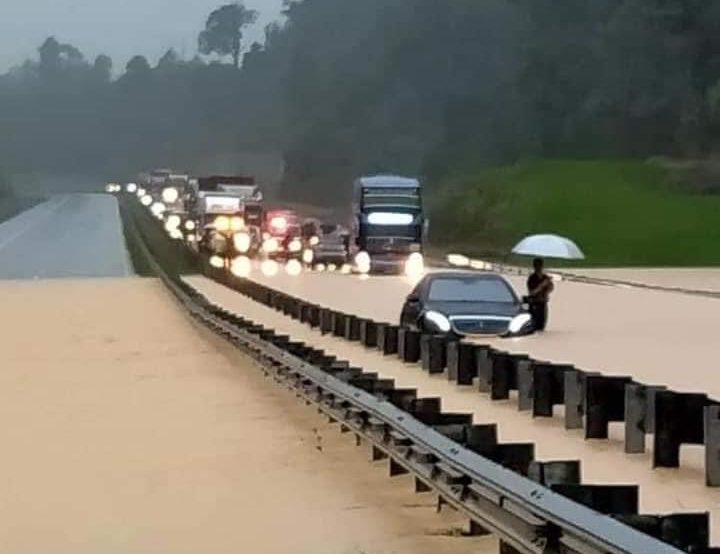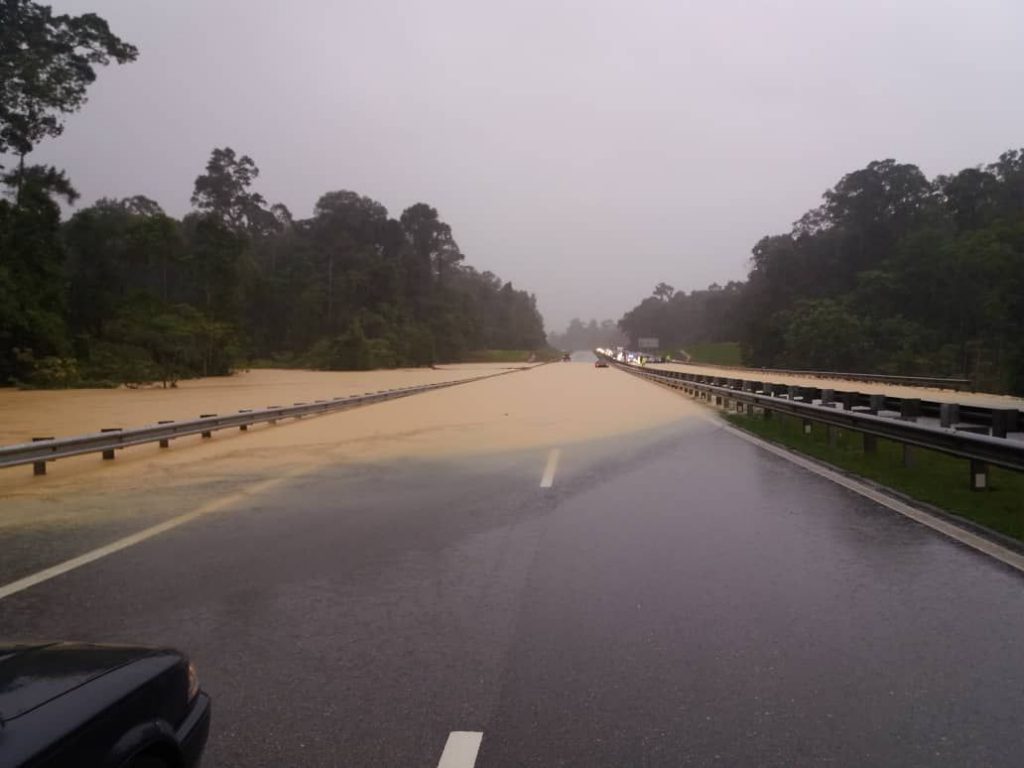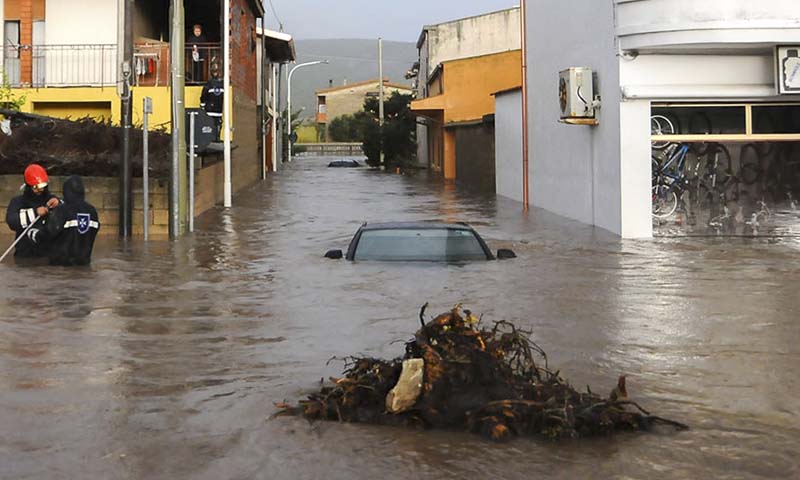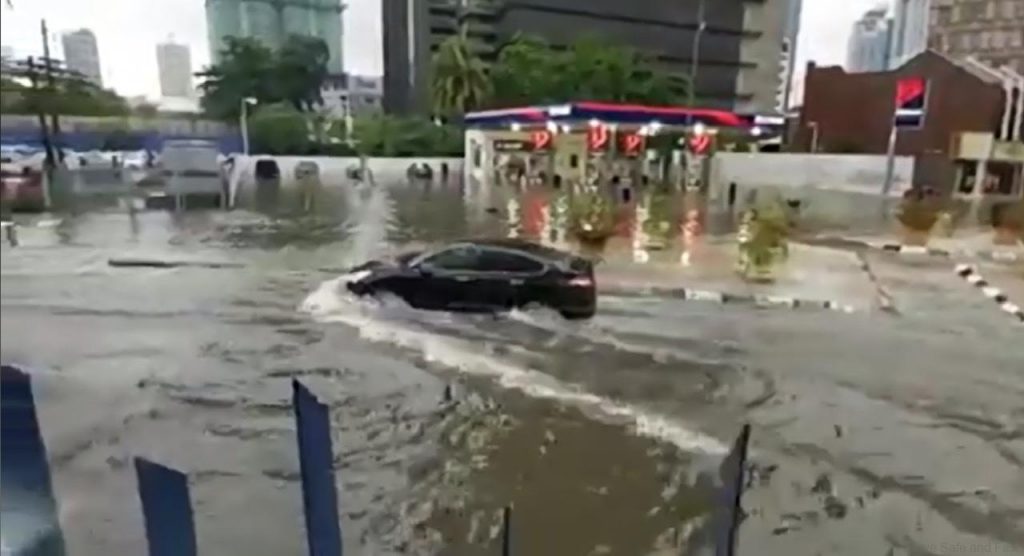Part Of East Coast Expressway Flooded Since Morning

A flooded section of the East Coast Expressway has disrupted travel plans for many interstate travellers.
It looks like Malaysian are starting the year in a truly wet and wild fashion, with most regions in the peninsula experiencing heavy, and more worryingly, sustained downpour since the ringing in of the new year.
While hopefully most of you reading this at time of first publication (3rd January 2021) are warm and snug at home, there are however quite a few unlucky souls out there who have been caught out while on the road in this wet weather. Not least because many have been stuck in traffic jams on flooded roads since the early morning.
One such example of these unfortunate motorists are the many interstate travellers who are stuck (at time of writing) East Coast Expressway (LPT), as a flash flood that occurred over a 1 km stretch on KM 198 of the expressway, near the Sri Jaya and Gambang interchanges has forced all lanes to be temporarily closed.

According to news reports, that flooded section of highway is currently under at least two feet of water. Authorities also are now urging travellers to and from Kuantan and Kuala Lumpur to call off their journeys between these two areas using this expressway for the time being.
So then, to those who have the need/want to venture out there, what could you do to ensure your safe travels in this heavy rain? Well, it is perhaps too late to do anything about bald tires and ineffective windshield wipers (to those who currently have these problems on your car, please don’t venture out), but there are still a few tips on how to make it to your destination in a safe manner, even in this wild weather.

Check Waze Before Setting Off
The first and perhaps most common-sense tip here is that before even starting your journey, it is best to use Waze to check for floods and traffic jams that may come up on your journey. Thanks to technology these days, it is indeed possible to make a more informed decision on whether the journey is actually worth the hassle in these wet and rainy conditions.

Do NOT Drive Into Flood Water
If one does however encounter a flash flood while out on one’s travels, the idea is NOT to charge in full steam ahead into the pond that has just formed where the road used to be. This statement holds true even if you are indeed driving a high-riding SUV or pickup truck that is marketed to be able climb every mountain, and ford every stream.

The rationale to not charge through the flood water stems from the fact that it may be quite hard to gauge the real depth of the flash flood ahead. There have been many a case of drivers who confidently charge ahead into the flooded road, only to discover that this was indeed a bad idea when water starts to creep above their window line.

Another thing about driving through a flood is that there might be debris underneath the flood water which may cause damage to your car when attempting to traverse the flash flood. Most importantly too, the current of the flood water could be strong enough, in some cases, to wash even your thousand-plus kilogram car off the road.
It is therefore best to either wait for the flood water to subside, or try an alternative route when encountered with a submerged stretch of road.

Drive Slowly and Consistently
This probably should go without saying, but it is best practice not to speed and/or drive recklessly during the wet.
Carrying too much speed on wet roads would inevitably lead to aquaplaning, regardless of how grippy your tires may be. Stagnant puddles of water too on the road could lead to skidding, which would be made all the more worse when traversing through it at high speed.

In rainy conditions like what we are experiencing today, slow and steady would be your best bet to make it to your destination safely. Keep in mind to leave a larger than normal gap to the car in front, to account for increased braking distance on these wet, slippery road surfaces.
Furthermore, it is perhaps best practice to turn on your headlights when driving in these wet conditions. Not only because this helps increases visibility when driving in the rain, but it also allows other motorists on the road to know that there is a car there in these low visibility conditions.
Having said that, there is no necessity to actually turn on your hazard or fog-lights in this scenario, unless you’re in a real emergency or the weather is foggy that is.

Stay dry, and stay safe!




